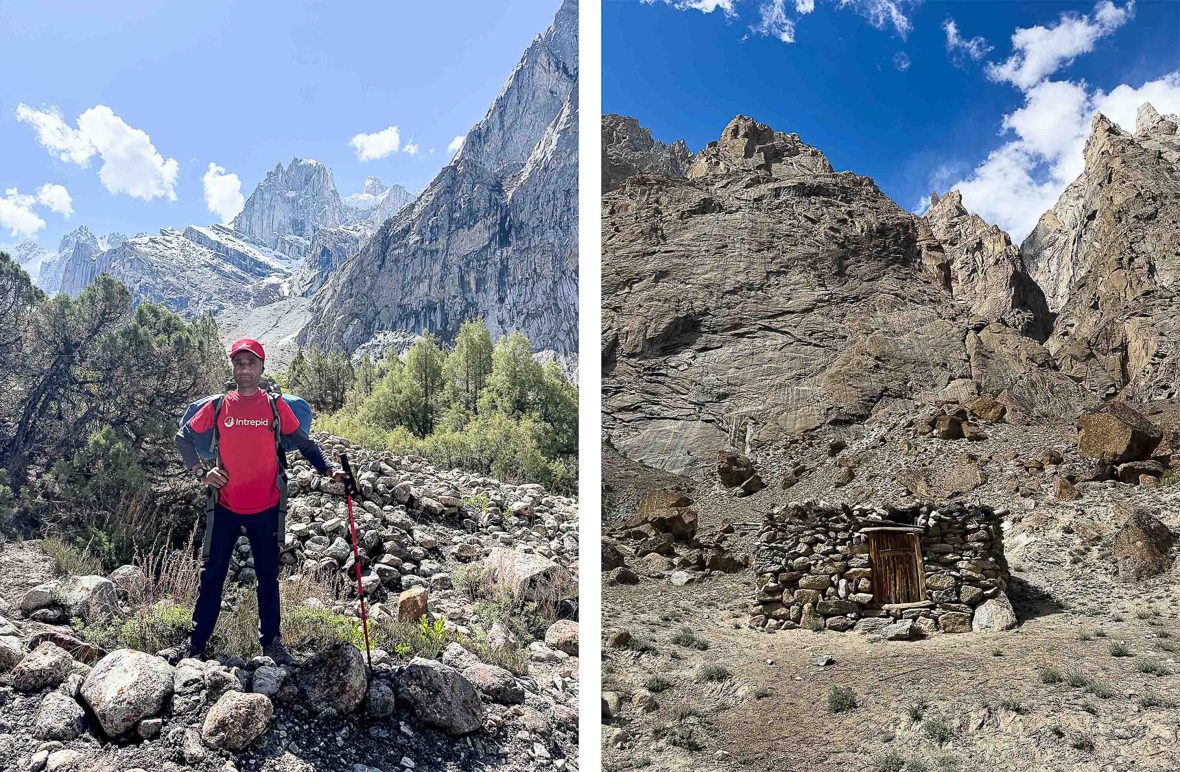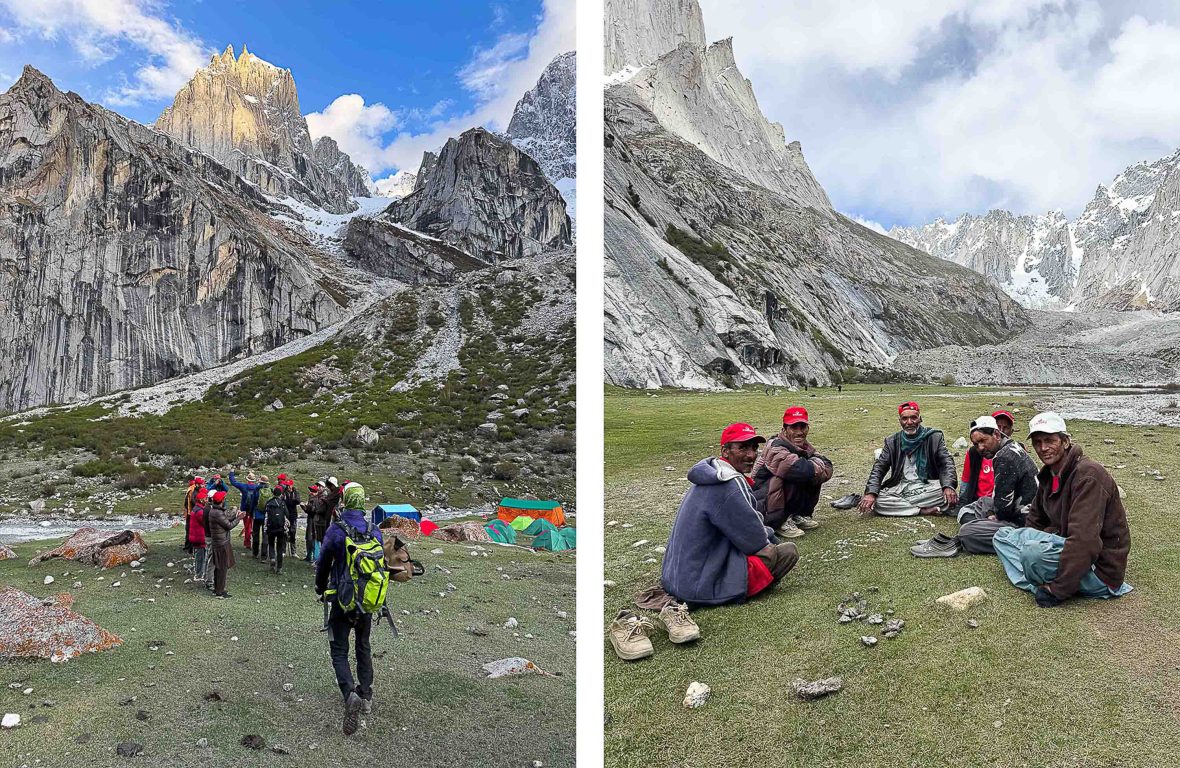
The wild mountain landscapes of northern Pakistan are more accessible to hikers than ever. Here’s everything you need to know before lacing your boots, according to trekker Sarah Reid.


The wild mountain landscapes of northern Pakistan are more accessible to hikers than ever. Here’s everything you need to know before lacing your boots, according to trekker Sarah Reid.
Frosted peaks pierce the sky and turquoise rivers snake through alpine valleys in Gilgit-Baltistan, a region of surreal natural beauty tucked up in Pakistan’s remote northeast. Home to two of the world’s most famous mountain ranges—the Karakoram Mountains and the western Himalayas—with more than 700 peaks rising above 19,685 feet (6,000 meters), Gilgit-Baltistan has long been a magnet for mountaineers.
But while a steady stream of serious alpinists arrive every summer to tackle K2 (so many that overcrowding on the world’s second-highest peak is becoming a concern), non-technical hikers have been slow to follow since the events of 9/11 and the international tension decimated Pakistan’s tourism industry.
As Pakistan becomes increasingly more accessible to international travelers, this is the time to hit the trails before the crowds arrive. But what’s it actually like to hike in Pakistan in 2024? After joining one of Intrepid Travel’s first Trek Pakistan’s Karakoram Mountains tours, here are my nine key takeaways.

The trekking season runs from May to September, and most visitors begin their trip in Skardu, an hour’s flight (or around 24 hours by bus) from the capital Islamabad. Wandering its dusty streets lined with small hotels, adventure gear stores, tour agencies and restaurants, Skardu reminded me of the less developed version of Kathmandu’s Thamel tourist zone that I saw during my first trip to Nepal in the 1990s (which was still significantly less developed than Skardu today).
Also accessible by bus and plane from Islamabad is the larger city of Gilgit, the capital of the Gilgit-Baltistan region. A four-hour drive from Skardu, this is the main jumping-off point for exploring the particularly picturesque Hunza Valley to the north and Nanga Parbat, Pakistan’s second-highest peak, to the south. The Hunza Valley is more developed for tourism than Skardu, but you won’t find a buzzing backpacker scene here—yet.
While it’s certainly possible to explore Gilgit-Baltistan independently, the lack of tourism services, including a comprehensive and reliable local bus network, makes an organized tour worth considering.
Cricket is (essentially) a religion in Pakistan, and after rolling into the first camp on our Nangma Valley trek, I wasn’t surprised to see a cricket bat and ball appear from a porter’s load.
Gilgit-Baltistan’s top hiking trails are spread across the Karakoram Mountains and the adjoining western Himalayas. The most popular (and busiest) multi-day hikes include the challenging 12-to-14-day trek to K2 Base Camp in the Karakoram Mountains, and the easier three-day hike to Nanga Parbat Base Camp, via the aptly named Fairy Meadows, in the western Himalayas.
Less trafficked routes include the Nangma Valley, the steep but spectacular hike on my Intrepid itinerary. Aside from the lack of crowds, my favorite thing about this three-to-four-day hike near the village of Kanday was the absence of development beyond stone shepherd’s huts—up here it’s just you and your trekking party, the mountains, and the odd shepherd tending to their cows.
Other uncrowded and similarly beautiful trails in the Karakoram Mountains include the five-day trek to Masherbrum (also known as K1) Base Camp, and the five-to-six-day Charakusa Valley hike, which takes in K7 Base Camp. There are also plenty of day hikes to tick off across Gilgit-Baltistan.
Guides are compulsory for most treks, and a permit is required for treks above 21,325 feet (6,500 meters). Porter wages are set by the government, but it’s worth checking in advance if your operator provides adequate food and shelter for their porters. And tips are always encouraged.
I felt safe and welcome as a foreigner and a woman while traveling throughout Gilgit-Baltistan on a group tour, and while attacks on foreign tourists in the region are rare (but include sexual violence, which is common in Pakistan), the security situation remains unpredictable. Armed guards have accompanied hikers on expeditions in the Nanga Parbat area (in southern Gilgit-Baltistan) since nine foreign hikers were killed here by the Taliban in 2013, and ‘do not travel’ warnings are currently active for vast swathes of the country beyond Gilgit-Baltistan.
Cricket is akin to a religion in Pakistan, and after rolling into the first camp on our Nangma Valley trek, I wasn’t surprised to see a cricket bat and ball produced from a porter’s load. Spending a sunny afternoon having a hit with our all-male porter team, surrounded by sparkling glaciers, was a great opportunity to connect with them. Most Pakistani porters speak at least a little English, so if you’re from a cricket-playing nation, it’s worth brushing up on your cricket chat as you can bet on being asked about your favorite players.

The average altitude in Gilgit-Baltistan is 11,000 feet (3,350 meters), and most multi-day hikes will take you higher than this. If you’ll be hiking above 13,123 feet (4,000 meters), make sure to check your travel insurance covers altitude travel. The highest campsite on my Nangma Valley hike sat at 12,959 feet (3,950 meters), with an optional side-trek to Amin Brakk Base Camp (14,764 feet/4,500 meters).
K2 Base Camp sits at 16,732 feet (5,100m), about 1,181 feet (360 meters) lower than Nepal’s Mount Everest Base Camp. With the first symptoms of altitude sickness typically experienced at 10,000 feet (3,000 meters), I took Diamox (a prescription drug that accelerates acclimatization) as a preventative measure. But medication, as always, is a conversation for your doctor.
While it’s possible for non-Muslims to buy drinks across Pakistan at a handful of big-city hotel bars and restaurants (and at wine shops, with a special permit), it’s essentially a dry country. Made with mint, lemon juice, sugar, salt and water, the ‘mint margaritas’ available on most restaurant menus are a seriously refreshing alternative to a summit beer. The lemon and mint also help to aid digestion, which can be affected by hiking at high altitude.
The largest ethnic group in Gilgit-Baltistan is the Baltis, who are of Tibetan origin. In the Hunza district you’ll meet the Burusho people, thought to be descendants of Alexander the Great.
Who knew Gilgit-Baltistan makes the world’s most delicious trail mix? I loved the blend of locally grown and dried apricots, mulberries and walnuts that we munched on during our hike. We also feasted on fresh cherries grown across the region.
The meals served on multi-day hikes vary between operators, but I never went hungry on my Nangma Valley trek. We fueled up with omelets and Nutella on toast for breakfast, and lunches and dinners kicked off with a hearty soup followed by a selection of share-style Pakistani and international dishes spanning flavor-packed dal to fried chicken. And the chicken was very fresh, if you get my drift.

You don’t need to be a hiker to enjoy Gilgit-Baltistan. The verdant valleys, serene lakes, historic forts and rich cultural traditions of the Hunza Valley make this a particularly popular destination for sightseeing and cultural tourism, with unmissable sights including the historic Baltit Fort in Karimabad, the capital of the Hunza district, as well as the nearby Altit Fort. Just driving through the Hunza region on the famed Karakoram Highway (N35) is an experience in itself.
Most easily accessed from Skardu, Shigar and Khaplu are also home to beautiful forts, tastefully transformed into boutique hotels. Part of Khaplu Fort, Khaplu Palace is home to a museum open to non-guests offering an intriguing glimpse into life as a 19th-century royal in this former princely state.
The largest ethnic group in Gilgit-Baltistan is the Baltis, who are of Tibetan origin. In the Hunza district you’ll meet the Burusho people, thought to be descendants of Alexander the Great. While culturally distinct from lowland Pakistanis, both groups are predominantly Muslim.
Despite maintaining what I thought was a high standard of personal hygiene in Pakistan, I experienced a stomach bug during my trip, which cleared up quickly with the help of antibiotics I had on-hand. I learned the hard way on a previous multi-day hike that it’s always a good idea to pack medication for common travel maladies before hiking into the wilderness. Medical services in Gilgit-Baltistan are very limited, even off the trails.
My takeaway? The combination of sublime scenery, no crowds, and my excellent Intrepid guide Muneer Alam made my Nangma Valley hike one of my all-time favorite multi-day tramps, and I’m already dreaming of my next hiking adventure in the Karakoram Mountains. After gaining an insight into the logistical challenges of solo travel in the region on my first trip, I’ll likely plan my next visit with the help of a reputable operator.
The writer traveled as a guest of Intrepid Travel.
***
Adventure.com strives to be a low-emissions travel publication. We are powered by, but editorially independent of, Intrepid Travel, the world’s largest travel B Corp, who help ensure Adventure.com maintains high standards of sustainability in our work and activities. You can visit our sustainability page or read our Contributor Impact Guidelines for more information.








Can't find what you're looking for? Try using these tags: